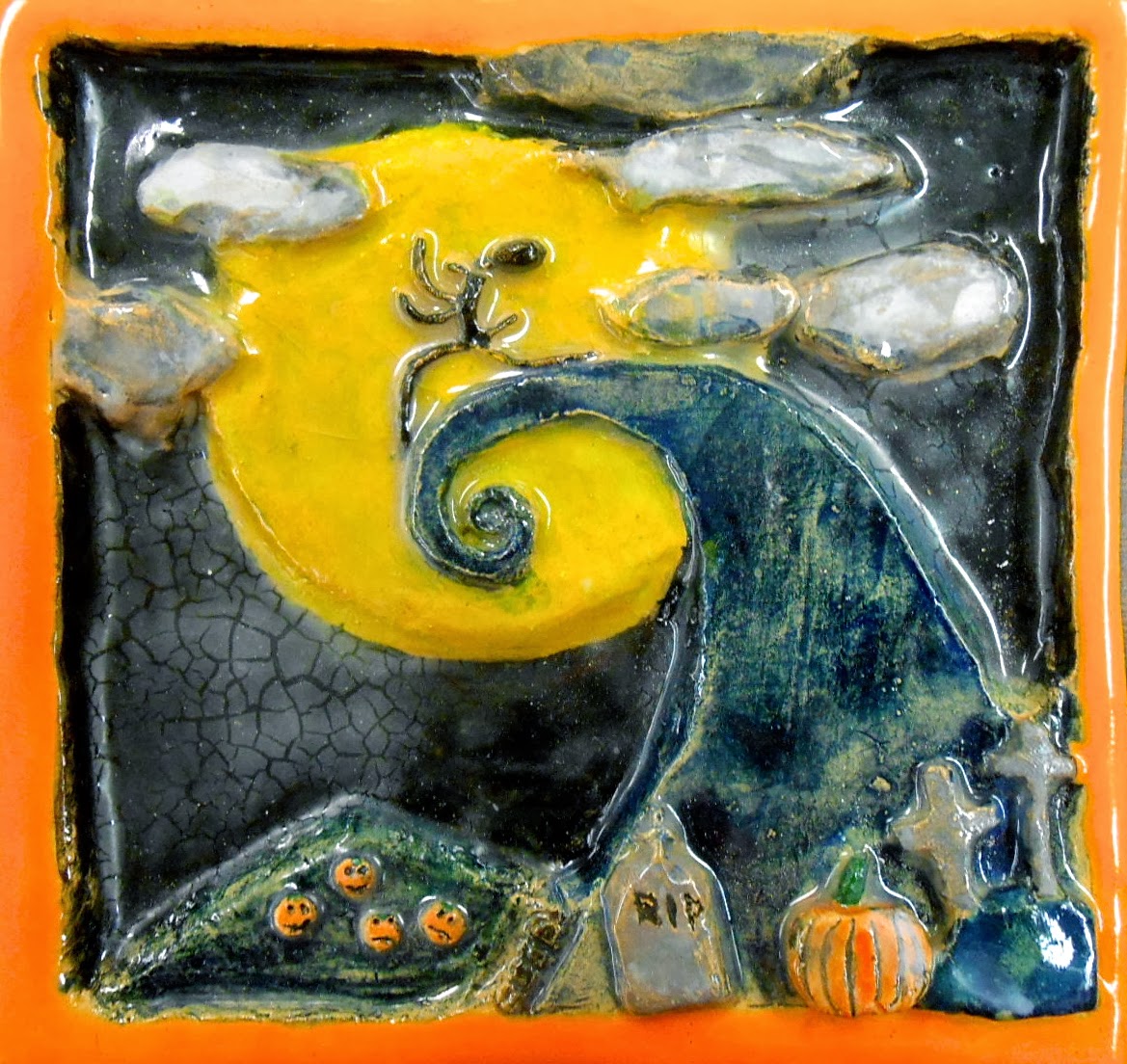Using cardboard looms all 6th-8th grade art students created two small circle weaving for a permanent collaborative installation in the library. Most of the yarn was collected by sending out a district wide email and the cardboard was cut from the numerous Blick art supply boxes I have been saving. With very little cost, and a high level of visual impact, this project was a great success!
Making the Loom:
Prep- Cut MANY 3x3 inch squares
1) Using a scissor cut the corners of the square off to make a circle
2) Around the edge mark with a pencil an odd number of evenly spaces lines (13,15, or 17)
3) Using a scissors, make a 1/2" cut towards the center of the loom using the pencil lines as a guide
4) Poke hole in center of circle
There are a couple of ways to begin setting up the loom once created. I have written detailed instructions below describing what worked best for us after some trial and error:)
1) Cut 3' of yarn and thread one end with a tapestry needle
2) Holding the loom, stick the needle through the hole from the backside and pull through to the front side of the loom.
3) Pull until you have 4" of yarn left hanging out the backside of the loom (do not make a knot)
4) Then, holding the 4" tail of yarn with one hand on the backside, take the yarn and place into one of the 1/2" along the cuts
5) Wrap yarn to the back side and again pull the needle through the center hole from the back side to the front.
6) Repeat step 4 and 5 until a piece of yarn securely placed in each cut.
7) Using the extra 4" of yarn left of the backside, knot the two ends of yarn together twice. Knot should be resting snugly against the backside of the loom.
8) Stick needle up the center hole one last time.
9) Begin weaving over under over under
10) Tie on additional yarn as needed in different colors as desired:)
11) Tie off yarn once done





























































